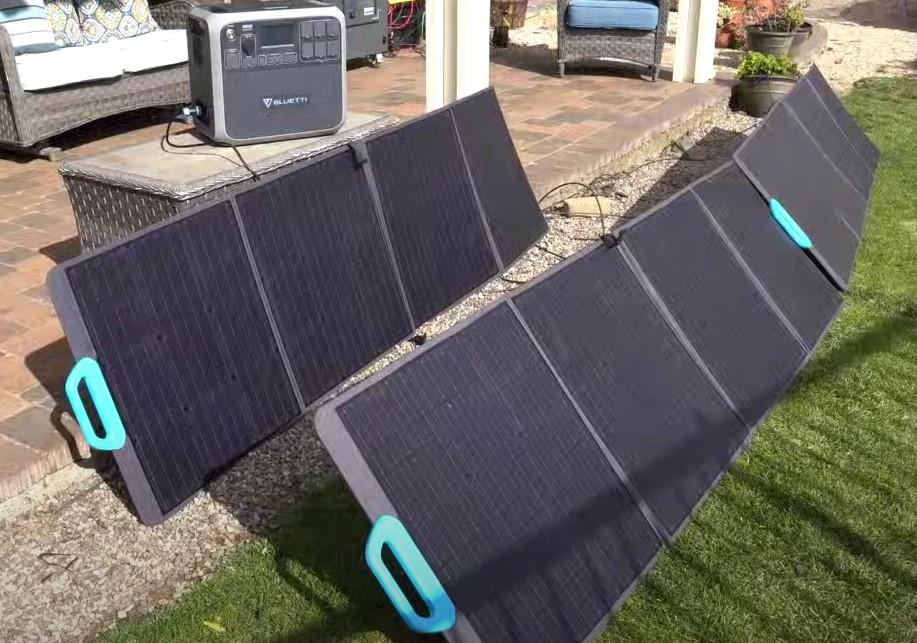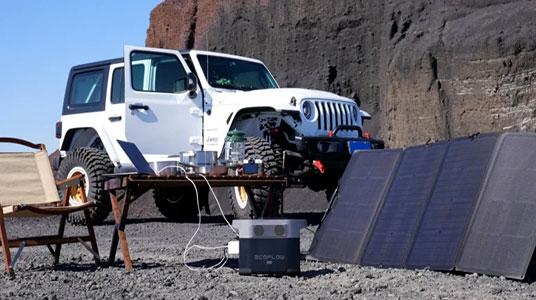Portable Power Station

When planning a camping trip, one of the most important things to consider is a reliable power source. Portable power stations offer a convenient and eco-friendly solution for powering your camping equipment, such as lights, phones, and cooking appliances. In this comprehensive guide, we will explore the benefits of using a portable power station for camping, factors to consider when choosing one, and the top models available in the market.
What is a Portable Power Station?
Benefits of using a portable power station for camping
Convenience
With a portable power station, you can bring your own power source wherever you go, without the need for noisy and polluting generators. This is especially useful for campers who enjoy off-grid locations or those who want to camp in areas without access to electrical outlets.
Cost savings
Investing in a portable power station can save you money in the long run, as you won’t have to spend money on fuel for generators or disposable batteries for your equipment. Plus, many models have a long lifespan, making them a worthwhile investment.
Reduced noise pollution
Portable power stations are much quieter than traditional generators, which can be disruptive to the peaceful environment of a campsite. This is especially important for those who value the tranquility of nature and want to minimize their impact on the environment.
Eco-friendly
Portable power stations are a greener alternative to traditional generators, as they don’t emit harmful pollutants and require less fossil fuel. This makes them a more sustainable option for those who care about the environment and want to reduce their carbon footprint.
Factors to consider when choosing a portable power station for camping
Power capacity
Consider the power capacity of the portable power station, which is measured in watt-hours (Wh). This will determine how long you can use your equipment before needing to recharge the power station.
Battery type
The battery type is also important, as it affects the lifespan and charging time of the power station. Lithium-ion batteries are a popular choice for portable power stations, as they are lightweight, long-lasting, and recharge quickly.
Weight and size
The weight and size of the power station are important factors to consider, especially if you plan on carrying it with you on hiking trips. Look for models that are lightweight and compact, without sacrificing power capacity.
Portability
Consider the ease of transport and storage when choosing a portable power station. Look for models with handles or wheels, and those that can be easily stored in your car or tent.
Charging time
The charging time of the power station is also an important consideration, as it affects how quickly you can recharge your equipment. Look for models with fast charging times, such as those that can be charged via solar panels or car chargers.
Durability
Choose a power station that is durable and can withstand the wear and tear of outdoor use. Look for models that are weather-resistant and have protective casing.
Additional features
Consider additional features such as USB ports, AC outlets, and LED lights, which can make your camping experience more convenient and enjoyable.
Top portable power stations for camping

Link:
400 watt peak output explorer 290wh portable power station
EcoFlow Delta Mini: Redefining Portable Energy Solutions for the Outdoor Enthusiast
What is the best for portable power stations? Top 3 outdoor power stations
Tips for Using a Portable Power Station While Camping
As mentioned earlier, a portable power station can be a valuable asset when camping. However, to get the most out of it, there are some important tips to keep in mind:
How to Conserve Power: One of the biggest concerns when using a portable power station is running out of power. To avoid this, it’s important to conserve power wherever possible. Some tips include:
Turn off devices when they’re not in use
Use power-saving settings on your devices
Charge devices during the day when the sun is shining (if using a solar-powered station)
Use energy-efficient devices
Safety Precautions: While portable power stations are generally safe to use, it’s still important to take some precautions to avoid accidents. Some tips include:
Read the manufacturer’s instructions carefully before using the station
Keep the station away from water and damp environments
Don’t overload the station beyond its capacity
Use the station in a well-ventilated area to avoid overheating
Maintenance Tips: To ensure your portable power station works effectively and lasts as long as possible, it’s important to take good care of it. Some tips include:
Keep the station clean and free from dust and debris
Charge the station regularly (at least every three months)
Store the station in a dry, cool place
Check the battery life regularly
Frequently Asked Questions (FAQs)
Can a portable power station charge a laptop?
Yes, a portable power station can charge a laptop, but it depends on the power output of the power station and the charging requirements of the laptop. Most portable power stations come with AC outlets and USB ports, which can charge laptops and other devices. However, it is important to check the power output of the power station to ensure it can meet the charging requirements of the laptop. Some power stations also come with DC output ports that are specifically designed for charging laptops, which can be more efficient and faster than using the AC outlets.
How long will a portable power station last?
The lifespan of a portable power station depends on a few factors, including the quality of the battery and the usage patterns. A well-maintained portable power station can last for several years, but it is important to follow the manufacturer’s instructions for charging and storing the battery. The battery capacity and the number of charge cycles can also affect the lifespan of the power station. In general, lithium-ion batteries, which are commonly used in portable power stations, have a lifespan of 500-1000 charge cycles.
How long does it take to charge a portable power station?
The charging time of a portable power station depends on the capacity of the battery and the charging method. Most power stations can be charged using a wall outlet, car charger, or solar panel. The charging time can range from a few hours to several days, depending on the capacity of the battery and the power output of the charging source. For example, a 500Wh power station can take around 7-8 hours to fully charge using a wall outlet, while a 100W solar panel can take around 10-12 hours to charge the same power station.
How many devices can be charged at once?
The number of devices that can be charged at once depends on the number and type of ports on the power station. Most portable power stations come with a combination of AC outlets, USB ports, and DC output ports, which can charge a range of devices simultaneously. However, it is important to check the power output and capacity of the power station to ensure that it can handle the load of multiple devices. Overloading the power station can cause damage to the battery and decrease the lifespan of the device.
Conclusion
In conclusion, a portable power station is a wise investment for camping enthusiasts seeking home comforts outdoors. We’ve covered the benefits, considerations, and all you need to know for an informed decision.
Choose a power station fitting your needs and budget, conserve power, follow safety measures, and maintain your station. This way, you can enjoy its convenience for numerous future camping trips.Happy camping!

